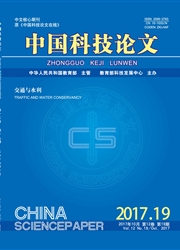

 中文摘要:
中文摘要:
采用显微成像荧光光谱系统对退变(病变)的软骨及健康软骨样本不同深度位置进行显微探测和荧光光谱采样。结果显示:在非钙化区,退变样本的340/414nm荧光光谱强度低于健康样本,而在钙化区和骨质区,退变样本荧光强度则高于健康样本;2类样本在钙化区和骨质区的荧光光谱强度均高于非钙化区。这些现象可能是由于退变发生时,糖基化终产物(advanced glycation end products,AGE)大量积累,破坏了胶原网络的完整性,导致非钙化区荧光强度减弱;而在钙化区及骨质区发生了形态和构成上的改变,导致荧光强度增强。同时,从软骨到骨质的变化过程中,胶原的主要构成从Ⅱ型变成了Ⅰ型,导致骨质区荧光强度增加并发生红移。本文为利用显微成像荧光光谱技术研究关节软骨提供了一定的实验依据和病变特征,有助于相关疾病的早期监测及诊断研究。
 英文摘要:
英文摘要:
Microscopic imaging-based fluorescence spectroscopic system was used to collect the micro-image and fluorescence spectra of healthy and degenerated cartilage at the different section depth.The results show that 340/414 nm fluorescence intensity at non-calcified zone of degenerated articular cartilage is lower than that of healthy cartilage.While,the fluorescence intensity at calcified and bone zone of degenerated cartilage is higher that of healthy sample.The fluorescence intensity of the calcified and bone zone is stronger than that of non-calcified zone for healthy and degenerated sample.The above results are due to the accumulate of advanced glycation end products(AGE)after degeneration,which destroys the structure of collagen net and results in the decrease of fluorescence at non-calcified zone.The obvious increase of fluorescence intensity at calcified and bone zone might be ascribed to the changes in morphology and component.With the depth increasing from cartilage to bone,the collagen type changes from type II to type I,which causes the intensity increase and red shift of the 340/414 nm band.The spectral characteristics of degenerated sample by microscopic imaging-based fluorescence spectroscopy will be very helpful for early detection and diagnosis of related diseases.
 同期刊论文项目
同期刊论文项目
 同项目期刊论文
同项目期刊论文
 期刊信息
期刊信息
